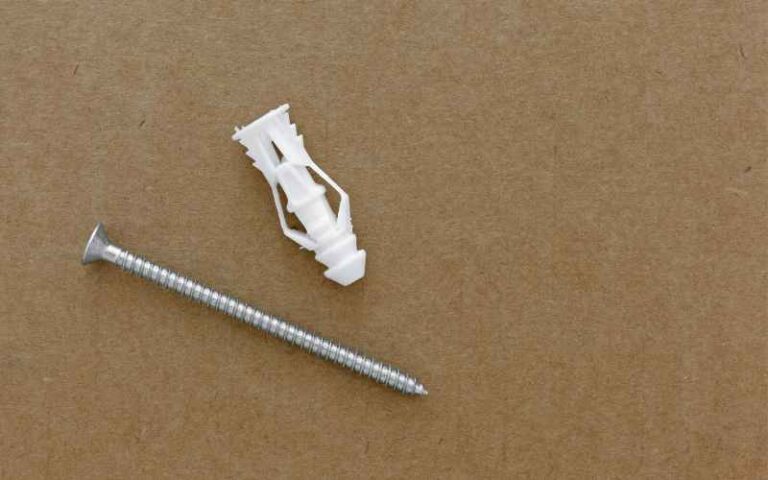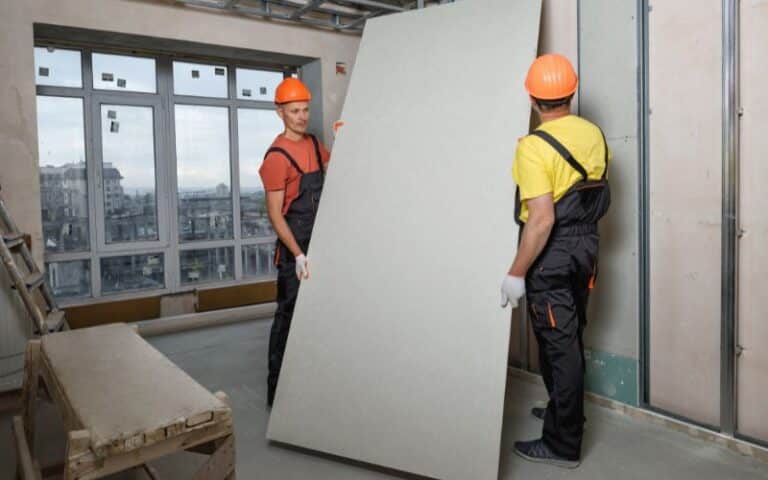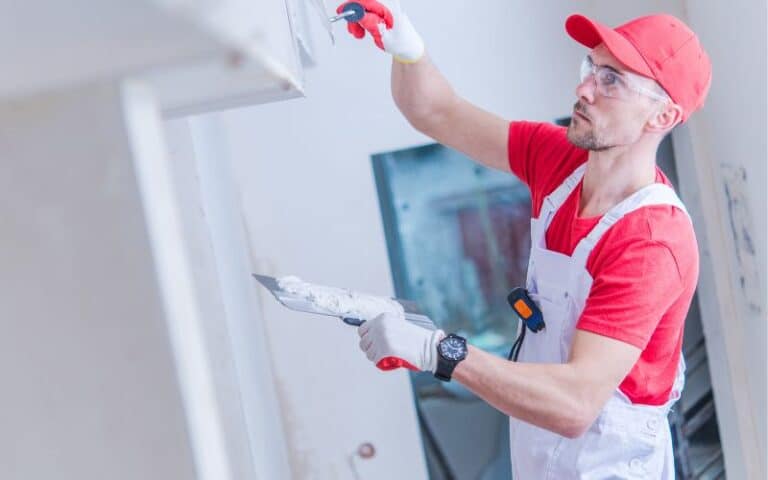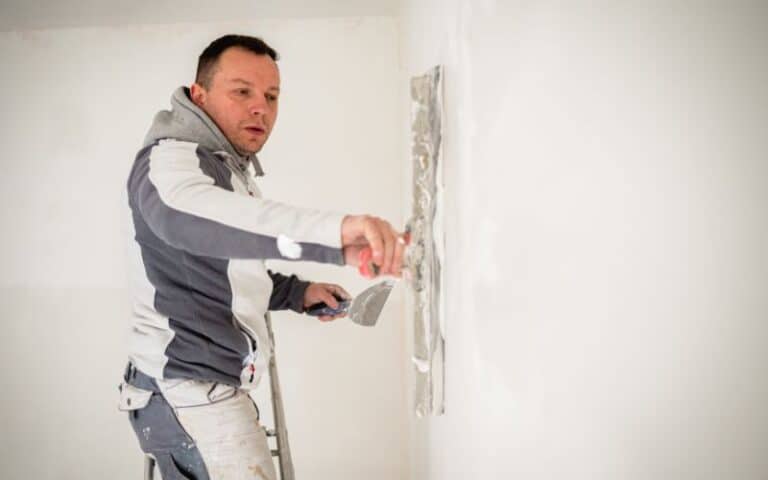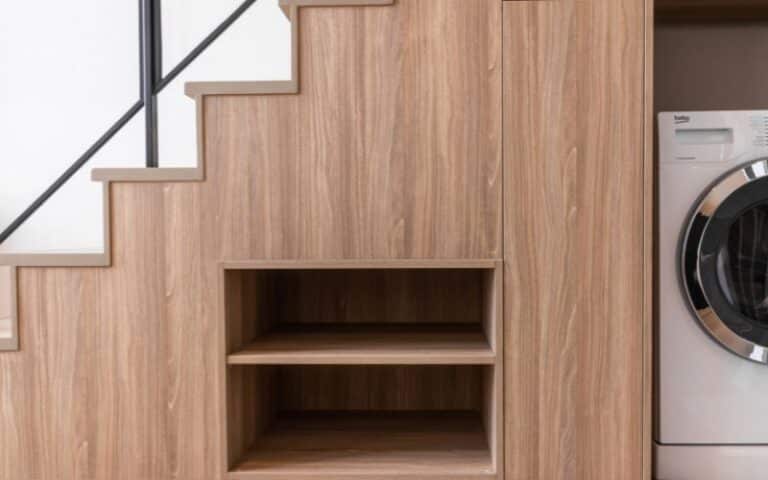Spicing up your interior decór to your taste while maximizing space is paramount for a homeowner.
Pocket doors are just the spice that boosts your unique interior designs, increasing space for other purposes.
However, you might wonder if you can install your pocket door without removing the drywall. Is this possible? Let’s find out!
You can install your pocket door without removing the drywall. Pocket doors are exceptional and show their uniqueness in blending with drywall. If you want to perform a DIY project at home, you can follow some steps to install a pocket door. First, consult a professional to assist in installing the pocket door.
This article will provide basic information about installing pocket doors without removing the drywall.
Furthermore, you’ll discover more about the thickness of your drywall and the costs for pocket door installation.
Ready for a Drywall Quiz?
Can You Install a Pocket Door Without Removing the Drywall?
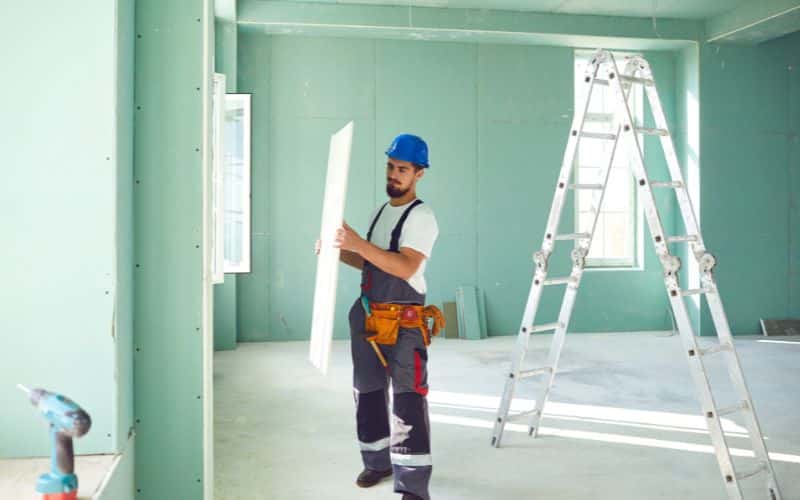
You can install a pocket door without removing the drywall.
Due to its ubiquitous nature, a pocket door can fit seamlessly into drywall and be a great way to manage the space in your home.
Homeowners often have great enthusiasm for changing the interior of their homes, especially when the house is old.
For instance, if your house has existed for years, you’d want to upgrade it to look like a house in the modern era.
Space is the one thing that many homeowners often seek to maximize in their homes.
And pocket doors are no novices in this sector as they go a long way to utilize space and still give you a mind-blowing appearance.
You can utilize pocket doors in several places like the dining room, master bedroom, and many more.
Since pocket doors slide in and out, you can use them to separate two rooms efficiently.
For instance, if you want to create two rooms in a limited space, pocket doors are just the right for the job.
They blend in perfectly, creating balance and separation, allowing you to hit two targets simultaneously.
And you can perform these beautiful creations without affecting your drywall. You can effortlessly perform this DIY project depending on your expertise.
However, you can consult a professional if you encounter difficulties.
Nonetheless, you learn more about some pros and cons of pocket doors in the table below.
| Pros | Cons |
|---|---|
| It allows for the separation of different rooms or spaces in your home. | It allows for the separation of different rooms or spaces in your home. |
| It’s a great way of maximizing space. | It only fits in some spaces. |
| It provides more privacy. | It’s only compatible with some walls. |
| It allows for separation of different rooms or spaces in your home. | The lock is not as strong as other doors. |
How Do I Install Pocket Door Without Removing Drywall?
Installing a pocket door is straightforward as it requires little effort and the right materials.
However, many homeowners are often perplexed about installation as they worry about it affecting the drywall.
Others even consider removing the drywall as they think it will affect the pocket door installation.
But you don’t have to do that; you can install your pocket door without removing the drywall.
But how can you do this?
You can follow the procedure below to Install a pocket door without removing the drywall.
- You must first purchase a pocket door kit to perform this DIY project at home. This kit contains everything you’ll need to install the pocket door.
- Check for wiring connections inside or behind the drywall, which might affect your pocket door installation.
- Measure the door frame of your pocket door and ensure it’s the right fit for your drywall.
- Cut through the drywall using accurate measurements from the pocket door frame.
The size of the cut will solely depend on the shape and size of the pocket door frame.
- Cut the header of the frame of the pocket door. And cut many pieces for the frame of the pocket door.
- Install the header to the upper part of the drywall, and attach the studs and the track.
- Install the pocket door in the drywall.
- You can paint the pocket door with any color of your choice.
Making appropriate spaces for the wiring connections behind your drywall is crucial as it gives you a perfect installation.
However, if this process of pocket door installation is strenuous and time-consuming, you can consult a professional to assist you.
Furthermore, if you have little experience, attempting the installation is not advisable as you might encounter difficulties.
Nonetheless, if you have more experience with pocket door installation, you can perform it at home using the right tools and steps.
When Can You Not Install a Pocket Door?
You can’t install a pocket door when wiring connections or pipes run behind the wall.
Installing a pocket door in a wall filled with wiring connections and pipes is different as it requires technical assistance.
This creates additional installation costs and could surpass your budget. However, you can remove the wiring connections, but this depends on the type of wall your house possesses.
For instance, if your house is solely made of brick walls, removing the connections will be extremely difficult as you might encounter complications.
Nevertheless, if your house is made of drywall, it’ll be pretty easy for you to remove them as drywall is easy to break down.
Notwithstanding, it’s best to consult an expert when handling the wiring connections behind your wall.
Handling the wiring connections without assistance is not advisable, as unforeseen circumstances could endanger your life and properties.
Also, you can’t install a pocket door if the width of the wall is less than the pocket door.
Compatibility and accurate measurements are necessary when installing a pocket door on a wall.
The width of the wall must be enough to accommodate the width of the pocket door for a flawless fit.
Do You Need a Thicker Wall for a Pocket Door?
You need a thicker wall for a pocket door. However, this may vary and depends on the type of pocket door you want to use for your wall.
For instance, some pocket doors usually blend with the thickness of the wall, while others require additional thickness.
The sliding pocket door often requires a wall thickness of 107/145 mm. On the other hand, the overlapping sliding pocket door requires a wall thickness of 170 mm.
The thickness of the wall and pocket door is vital for their durability and lifespan.
Installing a thick pocket door in a wall that doesn’t match its thickness is not advisable, as the wall cannot hold the pocket door.
Similarly, using a pocket door that’s not thick enough for a thick wall will cause the same effect.
This boils down to the type of materials you purchase to construct walls in your home.
Always get high-quality materials for your home’s wall and pocket door construction.
It’s crucial to research and consult experts on the best materials to purchase when carrying out these projects at home.
It’s best to use pocket doors compatible with your wall for the right blend. Choose the pocket door you want to spice up your interior decór.
Drywall is the best wall for pocket doors as it’s easy to break down and rebuild.
Notwithstanding, you can settle for the wall you want to use for the pocket doors. However, ensure a wall and pocket door of equal thickness, width, and height.
This way, you can add finishing touches to make your design unique and aesthetically appealing.
How Much Does It Cost to Install a Pocket Door?
The cost of pocket door installation ranges from $150-$200. But this depends on the type of pocket door you want to install and the complexity of the installation, as it could be more or less.
The cost of installing a pocket door in an existing wall is different and ranges from $1000 to $2000.
This price usually includes labor costs and other materials. If you want to install the pocket door, you can purchase the materials, reducing the high costs.
On the other hand, if you want to hire a professional, you must pay the installation fees.
Note that the installation price varies as it solely depends on the type/style of a pocket door, the number of doors to install, and the finishing process.
You can always negotiate the price with the professional handling the installation.

